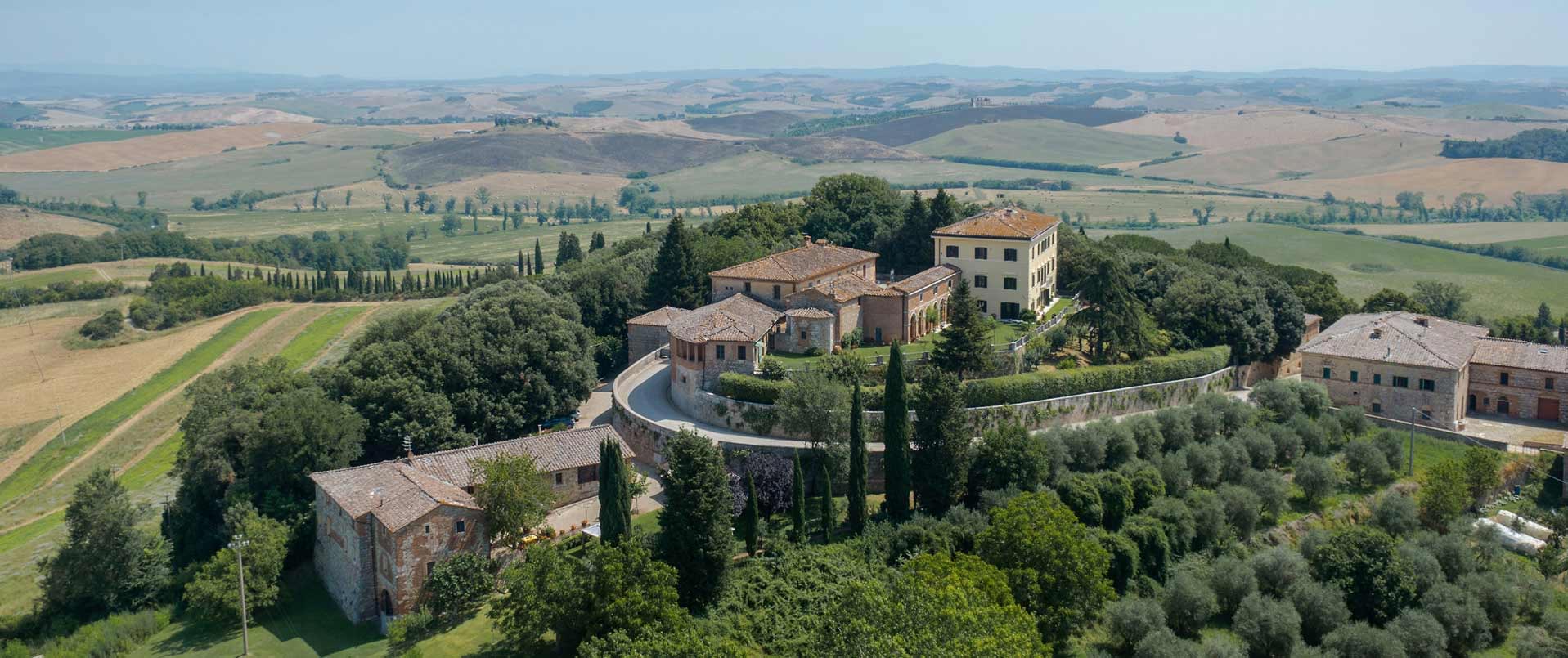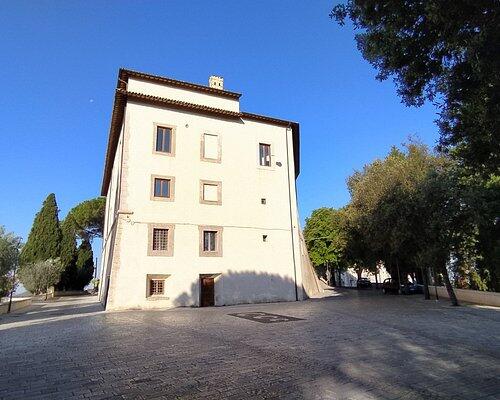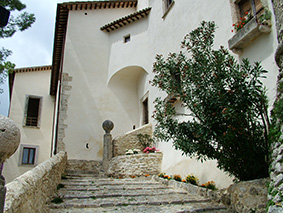




The first nucleus of the castle was built in the year 877 by a certain Francone with the consent of the Abbot of Farfa. From the middle of the 10th century, after the Saracen invasions, it is known that the feud of Mompeo passed to the brothers Gaderisio and Ottaviano di Buza. After various feudal lords such as the Crescenzi and the Savelli, Simeotto Orsini became feudal lord of Mompeo in the 12th century, the progenitor of a long dynasty that gave lustre and prestige to this land for five centuries and carried out important works to enlarge the castle.
The feud remained in the possession of the Orsini family at least until 1559, when the inhabitants restored the parish church dedicated to the Nativity during the rule of Alessandro and Virginia Orsini. Mompeo, erected into a marquisate, in 1635 the castle was purchased by the Marquis Capponi of Florence, who in turn ceded it to the noble Roman Naro family on 15 May 1646. During the rule of Bernardino Naro, the old Orsini fortress was almost completely renovated and only two towers remained unscathed. In its place, a monumentally important Baronial Palace was built, of which there is a description by Piazza that compares it to Armida’s enchanted castle.
Bernardino Naro and his son Fabrizio did not limit themselves to embellishing only the castle, they also took care of the entire town: they built fountains, opened new avenues and created gardens, embellished with column bases topped by marble spheres that are still scattered throughout Mompeo today. They had a majestic travertine entrance gate built, surmounted by the large family coat of arms and the beautiful balustrade in front of it, and they restructured and reorganised the town, whose streets were paved and articulated to serve the new baronial palace that became the unique and unifying centre of Mompeo.
The activities of Fabrizio and Bernardino Naro, friends of Pope Urban VIII, contributed to the civil and cultural progress of the Mompeo community. Also testifying to the deep emotional bond that united Fabrizio and Bernardino Naro to Mompeo is the fact that they both wanted their hearts to be buried in the chapel of the Mompeo parish church. After this period of particular splendour, the Naro family was still remembered until the mid-18th century, followed until the 20th century by the Patrizi, Luciani and Ciufici families, as well as the Baranello and Di Salvo families, as owners of the Palazzo Baronale.
Since 1995, the Baronial Palace has been owned by the Municipality of Mompeo and has undergone a complete architectural renovation. The interior is very large with a courtyard and loggia. Some rooms are frescoed by Sabine painter Vincenzo Manenti and Arezzo painter Salvi Castellucci. The only two remaining defence towers of the ancient fortress are on the left side of the façade and the one to the right of the country entrance, known as l’Asprona’.
Nessun appartamento configurato per questa dimora o la visualizzazione degli appartamenti non è attiva.